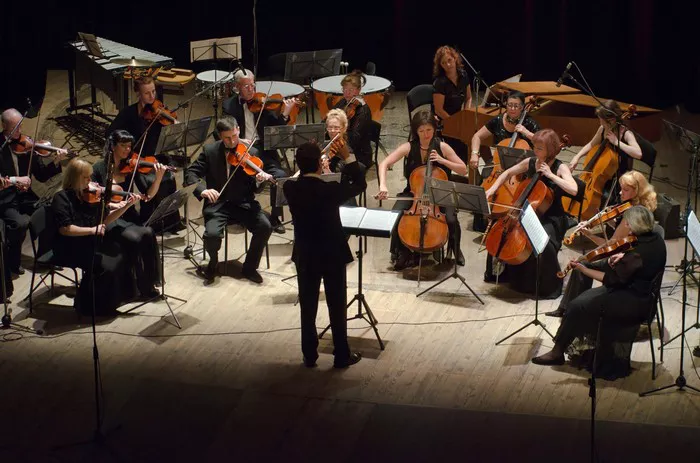Classical music, with its timeless appeal and intricate compositions, has captivated audiences for centuries. Within this vast realm of musical artistry, Bolero stands as a distinctive and enchanting genre, boasting a rich history and a unique set of characteristics that set it apart. In this article, we delve into the world of classical music, understanding its essence, and specifically exploring the captivating realm of Bolero classical music – from its composition to the renowned maestros behind its creation.
Understanding Classical Music
Classical music, often considered the epitome of refined musical expression, is a genre that spans several centuries and various cultural movements. Rooted in traditions that date back to the medieval and Renaissance periods, classical music encompasses a wide array of styles and forms. Characterized by its complexity, structural precision, and adherence to tonal harmony, classical compositions have stood the test of time, leaving an indelible mark on the world of music.
Central to classical music is the concept of orchestration, wherein a symphony orchestra, comprising strings, woodwinds, brass, and percussion instruments, collaborates to bring the composer’s vision to life. The genre’s repertoire includes symphonies, concertos, sonatas, and more, each showcasing the technical prowess and emotional depth inherent in classical compositions.
Understanding Bolero Classical Music
Bolero, a subgenre within the classical music landscape, possesses a distinctive charm that has mesmerized audiences since its inception. Originating in Spain in the late 18th century, the Bolero has evolved over time, incorporating influences from various regions and cultures. Unlike the lively and rhythmic Bolero associated with Latin American music and dance, the classical Bolero is marked by its slower tempo, evocative melodies, and expressive orchestration.
The term “Bolero” is derived from the Spanish word “bola,” meaning ball or dance. In its classical form, Bolero is not intended for dancing but rather for a deep emotional experience, with its lush harmonies and intricate orchestrations weaving a sonic tapestry that resonates with listeners on a profound level.
Bolero Classical Music Piece: A Symphony of Emotions
At the heart of Bolero classical music is the composition itself, a carefully crafted piece that unfolds like a narrative, evoking a range of emotions and sentiments. One of the most renowned Bolero compositions is Maurice Ravel’s “Boléro,” a masterpiece that has become synonymous with the genre.
Boléro by Maurice Ravel: A Timeless Masterpiece
Maurice Ravel, a French composer known for his impeccable craftsmanship and innovation, composed “Boléro” in 1928. This iconic piece is a single-movement orchestral work that builds upon a recurring melodic theme, gradually intensifying and expanding in orchestration as it progresses. The hypnotic rhythm and gradual crescendo create a sense of anticipation, making “Boléro” an emotionally charged and unforgettable experience for listeners.
The piece is characterized by its repetitive and insistent rhythm, with a snare drum maintaining a constant beat throughout. The melody, initially introduced by a solo flute, is passed on to various instruments as the composition unfolds. Ravel’s ingenious use of orchestration, dynamics, and pacing culminates in a powerful climax, leaving a lasting impact on those who experience its captivating journey.
Bolero Classical Music Composer: Maurice Ravel
To truly appreciate Bolero classical music, one must delve into the life and works of its distinguished composers. In the case of “Boléro,” Maurice Ravel emerges as a pivotal figure whose contributions to classical music are nothing short of extraordinary.
Maurice Ravel: A Musical Visionary
Born in France in 1875, Maurice Ravel exhibited musical prowess from an early age. His compositions reflect a meticulous attention to detail, an innovative spirit, and a profound understanding of orchestration. Ravel’s diverse body of work includes orchestral compositions, chamber music, piano pieces, and operas, showcasing his versatility as a composer.
While Ravel’s contributions to classical music are extensive, “Boléro” remains one of his most celebrated and iconic compositions. The piece’s success not only catapulted Ravel to international acclaim but also solidified his reputation as a musical visionary who pushed the boundaries of traditional composition.
The Legacy of Bolero Classical Music
As we explore the realms of classical music and the specific allure of Bolero, it becomes evident that this genre transcends mere auditory pleasure. Bolero classical music serves as a testament to the ability of music to convey emotions, tell stories, and resonate with audiences across time and space.
The enduring legacy of Bolero is exemplified by its influence on subsequent generations of composers and performers. Countless interpretations and arrangements of “Boléro” have emerged, further showcasing its timeless appeal and adaptability. The piece’s impact extends beyond the concert hall, finding its way into popular culture, films, and even dance performances, attesting to the universal appeal of its emotive power.
Conclusion
In conclusion, Bolero classical music stands as a shining gem within the vast treasure trove of classical compositions. Its slow and deliberate pace, lush harmonies, and emotional depth create an immersive experience that transcends the boundaries of time and cultural nuances. Maurice Ravel’s “Boléro” serves as a pinnacle of this genre, captivating audiences with its enduring beauty and unparalleled expressiveness.
As we continue to appreciate and explore the intricate world of classical music, Bolero remains a testament to the genre’s ability to evoke profound emotions and transport listeners to a realm of timeless beauty. The allure of Bolero classical music lies not only in its composition but also in the skillful hands of maestros like Maurice Ravel, who have crafted enduring masterpieces that continue to enchant and inspire generations of music enthusiasts worldwide.

